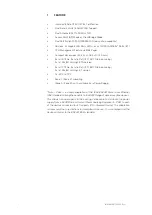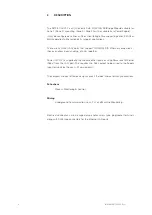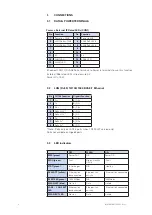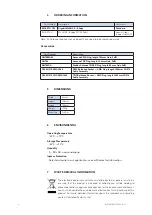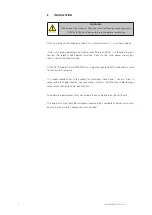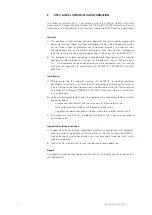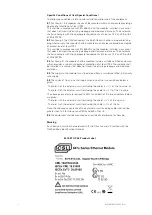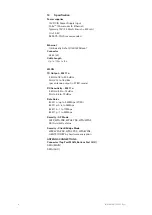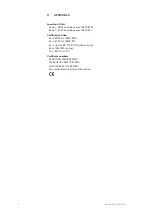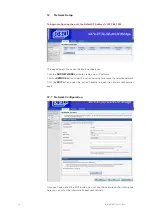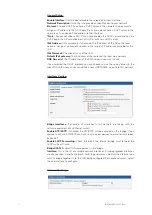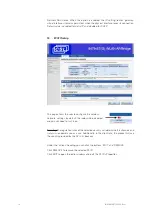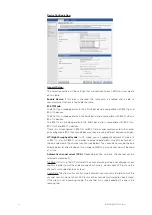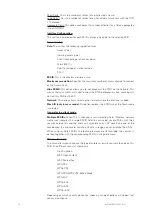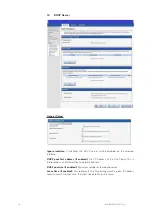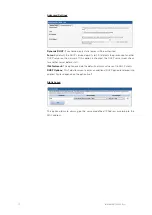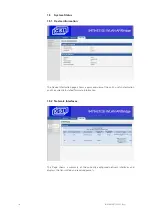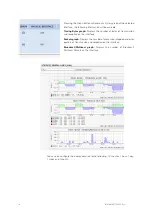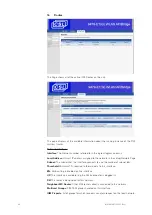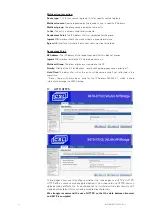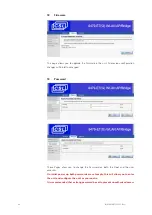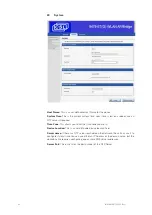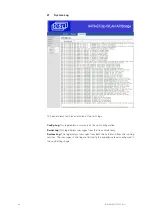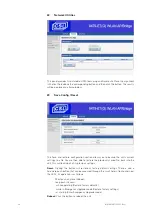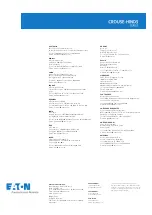
15
INM 9479-ET(G)-CSL Rev 1
Short Retry: This is the number of retries for a physical data frame.
Long Retry: This is the number of retries for a physical data frame sent with the RTS/
CTS
protocol
Aggregate Retry: This option configures the number of retries for a frame aggregated
into an A-MPDU.
Interface Configuration:
This section is duplicated for each SSID; settings only apply to the selected SSID.
General setup:
Role:
The unit has the following supported roles;
- Access Point
- Isolating access point
- Client (connecting at an access point)
- Mesh 802.11s
- Point to multipoint station (ad-hoc)
- SRCC
ESSID:
This is the Wireless network name.
Maximum association:
Specifies the maximum number of clients allowed to connect
on the Access Point.
Hide ESSID:
This option allows you to not broadcast the SSID on the network. This
means that your clients will need to know the SSID beforehand, since scanning will
not real this SSID on the AP.
Network:
This option allows selecting the network where the interface is added.
Mesh ID (only in mess mode):
This option replaces the ESSID when the Mesh mode
is selected.
General setup client mode:
Multiple ESSIDs:
When this is checked, a multi-selection field, (Wireless network
nicknames), replaces the single ESSID field. You can select several SSIDs with their
security parameters and the client will associate to any AP advertising one of the
combination. In case several matching APs are in range, you can prioritize the SSIDs.
When using multiple ESSIDs, the roaming features are not available; the security is
defined together with the corresponding ESSID in a separate menu.
Wireless Security:
This menu allows you to choose the type of wireless security you want to apply on this
SSID. The different security schemes are;
- No Encryption
- WEP Open System
- WEP Shared Key
- WPA-PSK
- WPA2-PSK
- WPA-PSK/WPA2-PSK Mixed Mode
- WPA-EAP
- WPA2-EAP
- WPA-LEAP
- WPA2-LEAP
Depending on which security option you choose, a range of options will appear that
you must configure.

